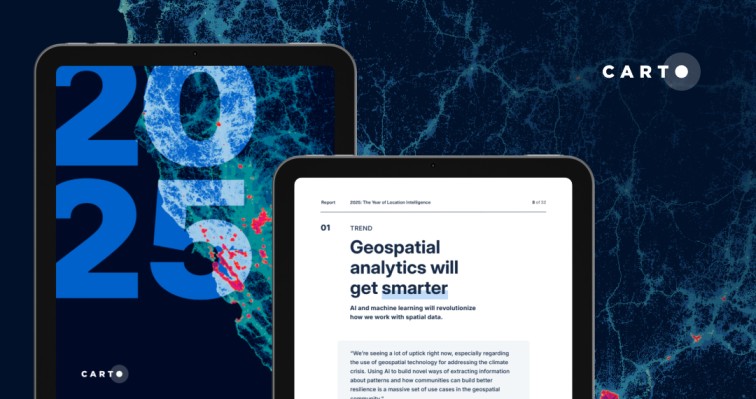.jpg)
What is Location Intelligence?
Location Intelligence (LI) is the methodology of deriving insights from location data to answer spatial questions. LI goes beyond simple data visualization on maps, to analyzing location data as an integral part of a business or societal problem.
How is Location Intelligence (LI) different from Business Intelligence (BI)?
Data Focus
BI focuses on temporal data, with maps occasionally being used. LI revolves around location-first analyses.
Analysis
BI platforms visualize & display pre-processed sets of results on a map. LI allows for an iterative analysis of multiple interactive data layers.
Typical User Actions
In BI, users talk about zooming, filtering & printing. In LI, we talk about analyzing, comparing, augmenting & publishing interactive results.
Questions Answered
BI focuses on where things are and what happened to a business. LI focuses more on the why behind those questions.

What are the main Location Intelligence use cases?
When we hear the words location analytics we typically think about geomarketing (i.e. geotargeted advertising) or site selection (i.e. planning QSR or store locations). However, as economies & businesses evolve we see a new generation of LI use cases emerging.
This can be anything from Electric Vehicle Charging Point Rollout, to 5G Network Deployment to IoT drone analytics. Every single sector is adopting LI to enhance their existing BI & Analytics capabilities.

Who typically uses Location Intelligence within an organization?
Marketing departments use it to lift campaign ROI; operations use it to optimize fleet activity; sales use it to balance territory design; HR use it to track employee travel& strategists use it to make sound M&A decisions.
More technical employees might be carrying out the analysis & app creation themselves, whilst more commercial stakeholders may interact with web apps designed to work in connectivity with their existing systems such as CRMs or ERPs.

Which types of data are used in Location Intelligence?
Location data can be anything from addresses & latitude/longitude coordinates, to points, lines & polygons. You can also create spatial data with place names & administrative units such as countries and states.
However, as well as using internal data from their organizations (such as CRM, loyalty card, ecommerce), organizations also regularly gather publically available Open Data to enrich their analysis.
More & more premium spatial data streams such as Financial, Human Mobility, Road Traffic, Points of Interest, Weather, Climate & Housing are also being used.
What are the challenges for Location Intelligence?
Data discovery, evaluation & cleaning is a big challenge for professionals in LI. Only 20% of their time is being spent on analysis, while the other 80% is being wasted in the preparation phase.
Organizations wanting to run their operations with more spatial context need to work with the right tools & find people with the right skill sets to reduce the 80% & increase the amount of time spent on analysis so that they can action relevant, key insights in their business sooner.




.jpg)

